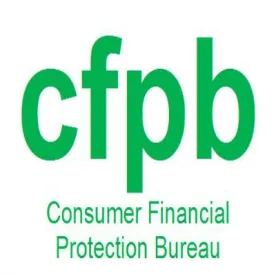In 1977, Congress enacted the Federal Fair Debt Collection Practices Act (FDCPA) to eliminate abusive debt collection practices by debt collectors, ensure debt collectors who refrain from using abusive debt collection practices are not competitively disadvantaged, and promote consistent state action protecting consumers against debt collection abuses.1 Since then, there has been litigation at the state and federal levels to clarify the FDCPA and how it should be applied.
These years of litigation are the result, at least in part, of a lack of guiding regulations. Prior to the 2010 Dodd-Frank Wall Street Reform and Consumer Protection Act (Dodd-Frank Act), Congress had not delegated to any agency the authority to issue substantive rules to interpret the FDCPA.2 With the passage of the Dodd-Frank Act, the Consumer Financial Protection Bureau (CFPB or the Bureau) was created and given authority to make rules and regulations in support of several consumer protection laws, including the FDCPA.
Final Rule
In May 2019,3 the CFPB published its proposed rules to support and interpret the FDCPA. In response to its proposal, the Bureau received more than 14,000 comments from consumers, consumer groups, members of Congress, other government agencies, creditors, debt collectors, industry trade associations and others. Nearly a year and a half after issuing its proposed regulations in support of the FDCPA, on October 30, 2020, the CFPB issued its final rule, which will become Regulation F, 12 CFR Part 1006 (Final Rule).
The CFPB describes the Final Rule as focusing on debt collection communications and related practices by debt collectors. Among other things, the Final Rule is intended to clarify how the protections afforded by the FDCPA apply to newer communications technologies (the FDCPA was enacted in 1977, when cellular phone technology was just emerging).
The Final Rule addresses concerns of unfair practices, misleading representations or otherwise abusive debt collection communications, and clarifies the application of the FDCPA to newer communication technologies.
Key highlights of the Final Rule:
-
The creation of a defined safe harbor for telephone voicemails, which will enable collectors to leave effective voicemails without fear of violating the FDCPA if they follow the guidelines. 12 CFR § 1006.2(d) and (j)
-
A new exclusion for persons who collect on debt purchased for themselves, so long as they do not collect for others and are not engaged in a business the principal purpose of which is to collect debts. 12 CFR § 1006.2(i)
-
Rules for contacting consumers by email, including rules on how the email address is obtained and what disclosures must be provided. 12 CFR § 1006.6(d)(4)
-
Rules for contacting consumers by text messages. 12 CFR § 1006.6(d)(3) and (d)(5)
-
The creation of a presumption of compliance with FDCPA (15 USC 1692d(5)), if a debt collector does not call more than seven (7) times in seven (7) days or calls within seven (7) days after a telephone conversation with the consumer. 12 CFR § 1006.14(b)(2)
-
A rule that specifically permits debt collector employees to use fake names, so long as they consistently use that name and can be readily identified by the name. 12 CFR § 1006.18(f)
-
A rule that addresses communication with a consumer through social media. 12 CFR § 1006.22(f)(4)
-
Guidance for debt collectors on how to handle multiple disputes on the same account. 12 CFR § 1006.38
-
Guidance on sending required disclosures electronically. 12 CFR § 1006.42
-
Requirements for retaining records of compliance with the FDCPA for three years after the last collection activity, including telephone calls. 12 CFR § 1006.100.
When these new rules are codified as Regulation F, consumers, debt collectors, attorneys and courts will finally have modern rules to reference when determining whether a debt collector’s particular action has violated the FDCPA.
Voicemail Messages
One of the most impactful rules provides a safe-harbor provision for voicemail messages to consumers. Landmark decisions in Hosseinzadeh v. M.R.S. Assocs., Inc., 387 F. Supp. 2d 1104, 1117 (C.D. Cal. 2005) and Foti v. NCO Financial Systems, Inc., 424 F. Supp. 2d 643, 655-56 (S.D.N.Y. 2006) found voicemails to be “communications” under the FDCPA,4 requiring debt collectors to include the identity of the caller and the Mini-Miranda warning in the voicemail:
“…the debt collector is attempting to collect a debt and that any information obtained will be used for that purpose, and the failure to disclose in subsequent communications that the communication is from a debt collector…”
These decisions created circumstances where debt collectors were essentially unable to leave voicemails in compliance with the notice requirements addressed in Hosseinzadeh and Foti without violating the FDCPA’s prohibition against third-party disclosure.5 As a result, many debt collectors chose simply to stop leaving voicemails because the risk that the voicemail would be found (or even alleged) in violation of the FDCPA was too great and too costly to repeatedly litigate. To avoid the risks associated with voicemails, debt collectors were left with few options but to make repeated calls without leaving message in hopes that the consumer would eventually answer the phone. This alternative, of course, presented a risk that a debt collector’s frequent calls would be deemed abusive and harassing.
Regulation F creates a safe-harbor provision, which specifically identifies how to leave a useful message for a consumer without the risk of violating the FDCPA, which is likely to fundamentally change how collectors communicate with consumers by phone. This demonstrates the CFPB’s fairly practical approach to the voicemail conundrum, and commentators from both sides appreciated the new rule. Notably, even consumer groups expressed that consumers generally would prefer to receive one message with the required information than multiple calls with no message.
Analysis & Clarifications
Beyond just the enacted regulations, the Final Rule, contains more than 500 pages of analysis specifically addressing the originally proposed rules, comments from industry leaders and consumer advocates, and the reasons why the CFBP adopted each of the proposed rules as-is, with changes or not at all.
Further, the CFPB also included another 50 pages of Official Interpretations with specific examples as to how the rules should be applied. For example, in its analysis, the CFPB opined on collection efforts against survivors of a deceased consumer and how the FDCPA applies to them. Initially, the CFPB planned to include such survivors in their definition of consumer, but after reviewing public comments the CFPB decided to leave the definition without that caveat for now, explaining that they may in the future address the issue more specifically. Now, if this issue arises in litigation, although a court may not have a codified rule to reference, it will at least be able to look to the CFPB’s published analysis and stated intent.
Application of the New Rules
The CFPB’s Official Interpretations also provide several examples explaining how to apply the new rules to our modern scenarios. For example, the CFPB describes the intent behind the new regulation regarding social media communications. In its Official Commentary, the CFPB describes that a debt collector may communicate with a consumer through social media so long as it is not generally available to the public (and did not violate other provisions). Essentially, the CFPB explained that a collector can send a private message to a consumer, but not post on their “wall” for others to see.
Overall, the CFPB’s Final Rule provides guidance on modern issues, whereas previously the courts were left to interpret and apply law and congressional intent from the 1970s to modern issues. When the FDCPA was enacted in 1977, debt collection efforts were mostly limited to telephone calls and letters to a consumer’s home. Now, nearly every person has a cell phone and text messaging, email and social media accounts. With this guidance from the Final Rule in place, consumers and debt collectors have clear guidance with less room for varying interpretations by the courts. With these new rules in place, the congressional purpose “to ensure that those debt collectors who refrain from using abusive debt collection practices are not competitively disadvantaged” is significantly reinforced. Additionally, with less ambiguity, debt collectors can modify their practices to operate within the defined scope of allowable conduct, which may lead to more effective collections and less litigation.
By creating Regulation F, the CFPB has done a great deal to provide modern clarification to nearly every part of the FDCPA. For a more in-depth review of the Final Rule, please see the full CFPB publication along with explanations and analysis of the comments. Regulation F will go into effect shortly, and companies that have concerns about the new rules should review the new regulations and seek assistance in interpreting how they apply to their operations.
The Impact of Regulation F
As companies make changes to address their processes to comply with the new regulations, it is important to make note of the impact these regulations will have on the industry. The Dodd-Frank Act requires the CFPB to conduct an assessment of significant rules within five years of the Final Rule’s effective date. Given the nature and extent of the Final Rule, the CFPB plans to treat Regulation F as a significant rule and is already preparing for an assessment. Specifically, the CFPB is considering the best way to obtain information regarding the impact of Regulation F.
The CFPB anticipates seeking feedback on the following topics:
-
Whether consumers find themselves less harassed by calls from debt collectors
-
Whether debt collectors are better able to understand how to communicate with consumers using modern technology in compliance with the FDCPA
-
Whether greater clarity about FDCPA requirements helps reduce litigation
-
The anticipated and unanticipated costs of Regulation F to consumers or an industry.
Lastly, companies should be on the lookout for more to come. The CFPB intends to issue a final rule in December 2020 that would focus on and provide a clearer interpretation of the consumer disclosure requirements and prohibitions. If the CFPB’s final rule on that issue is anything like this Final Rule, it will likely have a significant impact on how the FDCPA’s disclosure requirements are interpreted and implemented in our modern world.
1 15 U.S.C. 1692 (e)
2 Pub. L. 111-203; 15 U.S.C. 1692l(d)
3 See 84 FR 23274 (May 21, 2019)
4 15 U.S.C. § 1692a(2)
5 5 U.S.C. § 1692c(b)



 />i
/>i

